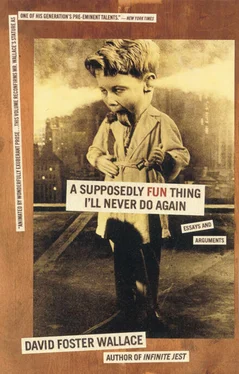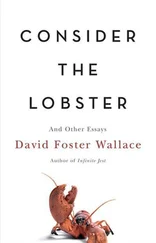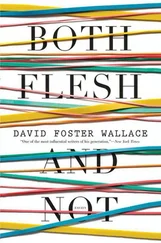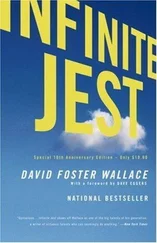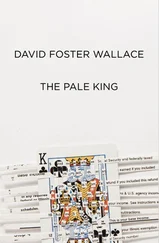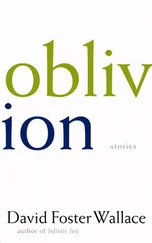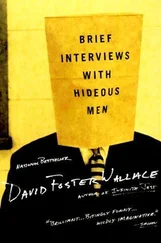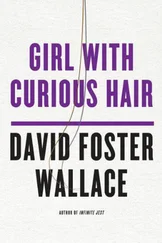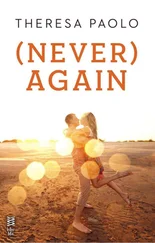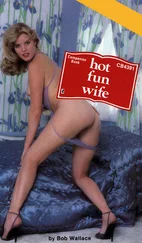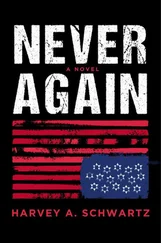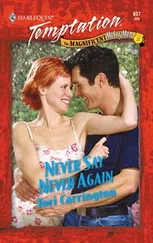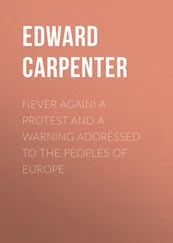Guarantees used to be against ATP rules and were under the table; they’ve been legal since the early ’90s. There’s great debate among tennis pundits about whether legal guarantees have helped the game by making the finances less shady or have hurt the game by widening the psychological gap between the stars and all the other players and by upping the pressure on tournaments to make it as likely as possible that the stars don’t get upset by an unknown. It is impossible to get Michael Joyce to give a straight answer on whether he thinks guarantees are good or bad — it’s not like Joyce is muddled or Nixonianly evasive about it, but rather that he can’t afford to think in good/bad terms, to nurture resentment or bitterness or frustration. My guess is that he avoids these feelings because they make it even harder to play against Agassi and the rest, and he cares less about what’s “right” in the grand scheme than he does about maximizing his own psychological chances against other players. This seems totally understandable, though I’m kind of awed by Joyce’s evident ability to shut down lines of thinking that aren’t to his advantage.
16(pronounced YAkob hLAsick)
17It took forever to get there from the hotel because I didn’t yet know that press can, with some wangling, get rides in the courtesy cars with the players, if there’s room. Tennis journalism is apparently its own special world, and it takes a little while to learn the ins and outs of how media can finagle access to some of the services the tournament provides: courtesy cars, VIP treatment in terms of restaurant reservations, even free laundry service at the hotel. Most of this stuff I learned about just as I was getting ready to come home.
18Joyce is even more impressive, but I hadn’t seen Joyce yet. And Enqvist is even more impressive than Joyce, and Agassi live is even more impressive than Enqvist. After the week was over, I truly understand why Charlton Heston looks gray and ravaged on his descent from Sinai: past a certain point, impressiveness is corrosive to the psyche.
19During his two daily one-hour practice sessions he wears the hat backwards, and also wears boxy plaid shorts that look for all the world like swimtrunks. His favorite practice T-shirt has FEAR: THE ENEMY OF DREAMS on the chest. He laughs a lot when he practices. You can tell just by looking at him out there that he’s totally likable and cool.
20If you’ve played only casually, it is probably hard to understand how physically demanding really serious tennis is. Realizing that these pros can move one another from one end of the 27′ baseline to the other pretty much at will, and that they hardly ever end a point early by making an unforced error, might stimulate your imagination. A close best-of-three-set match is probably equivalent in its demands to a couple hours of basketball, but we’re talking full-court basketball.
21Something else you don’t get a good sense of on television: tennis is a very sweaty game. On ESPN or whatever, when you see a player walk over to the ballboy after a point and request a towel and quickly wipe off his arm and hand and toss the wet towel back to the (rather luckless) ballboy, most of the time the towel thing isn’t a stall or a meditative pause — it’s because sweat is running down the inside of the player’s arm in such volume that it’s getting all over his hand and making the racquet slippery. Especially on the sizzling North American summer junket, players sweat through their shirts early on, and sometimes also their shorts. (Sampras always wears light-blue shorts that sweat through everyplace but his jockstrap, which looks funny and kind of endearing, like he’s an incontinent child — Sampras is surprisingly childlike and cute on the court, in person, in contrast to Agassi, who’s about as cute as a Port Authority whore.)
And they drink enormous amounts of water, staggering amounts. I thought I was seeing things at first, watching matches, as players seemed to go through one of those skinny half-liter Evian bottles every second side-change, but Michael Joyce confirmed it. Pro-grade tennis players seem to have evolved a metabolic system that allows rapid absorption of water and its transformation into sweat. I myself — who am not pro-grade, but do sweat like a pig — drink a lot of water a couple hours before I play but don’t drink anything during a match. This is because a couple swallows of water usually just makes me want more, and if I drink as much as I want I end up with a protruding tummy and a sloshing sound when I run.
(Most players I spoke with confirm, by the way, that Gatorade and All-Sport and Boost and all those pricey electrolytic sports drinks are mostly bullshit, that salt and carbs at table and small lakes of daily H2O are the way to go. The players who didn’t confirm this turned out to be players who had endorsement deals with some pricey-sports-drink manufacturer, but I personally saw at least one such player dumping out his bottle’s pricey electrolytic contents and replacing them with good old water, for his match.)
22The taller you are, the harder you can serve (get a protractor and figure it out), but the less able to bend and reverse direction you are. Tall guys tend to be serve-and-volleyers, and they live and die by their serves. Bill Tilden, Stan Smith, Arthur Ashe, Roscoe Tanner, and Goran Ivanisevic were/are all tall guys with serve-dependent games.
23This is mind-bogglingly hard to do when the ball’s hit hard. If we can assume you’ve played Little League or sandlot ball or something, imagine the hardest-hit grounder of all time coming at you at shortstop, and then you not standing waiting to try to knock it down but actually of your own free will running forward toward the grounder, then trying not just to catch it in a big soft glove but to strike it hard and reverse its direction and send it someplace frightfully specific and far away.
24Something else that’s hotly debated by tennis authorities is the trend of players going pro at younger and younger ages and skipping college and college tennis and plunging into the stress and peripatetic loneliness of the Tour, etc. Michael Joyce skipped college and went directly onto the pro tour because at 18 he’d just won the U.S. National Juniors, and this created a set of overwhelming inducements to turn pro. The winner at the National 18-and-Under Singles automatically gets a wild card into the U.S. Opens main draw for that year. In addition, a year’s top junior comes to the powerful but notoriously fickle and temporary attention of major clothing and racquet companies. Joyce’s victory over the 128-man National field at Kalamazoo MI in 1991 resulted in endorsement offers from Fila and Yonex worth around $100,000. $100,000 is about what it takes to finance three years on the Tour for a very young player who can’t reasonably expect to earn a whole lot of prize-money.
Joyce could have turned down that offer of a three-year subsidy and gone to college, but if he’d gone to college it would have been primarily to play tennis. Coaches at major universities apparently offered Joyce inducements to come play for them so literally outrageous and incredible that I wouldn’t repeat them here even if Joyce hadn’t asked me not to.
The reason why Michael Joyce would have gone to college primarily to play tennis is that the academic and social aspects of collegiate life interest him about as much as hitting 2500 crosscourt forehands while a coach yells at you in foreign languages would interest you. Tennis is what Michael Joyce loves and lives for and is . He sees little point in telling anybody anything different. It’s the only thing he’s devoted himself to, and he’s given massive amounts of himself to it, and as far as he understands it it’s all he wants to do or be. Because he started playing at age two and competing at age seven, however, and had the first half-dozen years of his career directed rather shall we say forcefully and enthusiastically by his father (who Joyce estimates spent probably around $250,000 on lessons and court-time and equipment and travel during Michael’s junior career), it seemed reasonable to ask Joyce to what extent he “chose ” to devote himself to tennis. Can you “choose ” something when you are forcefully and enthusiastically immersed in it at an age when the resources and information necessary for choosing are not yet yours?
Читать дальше
